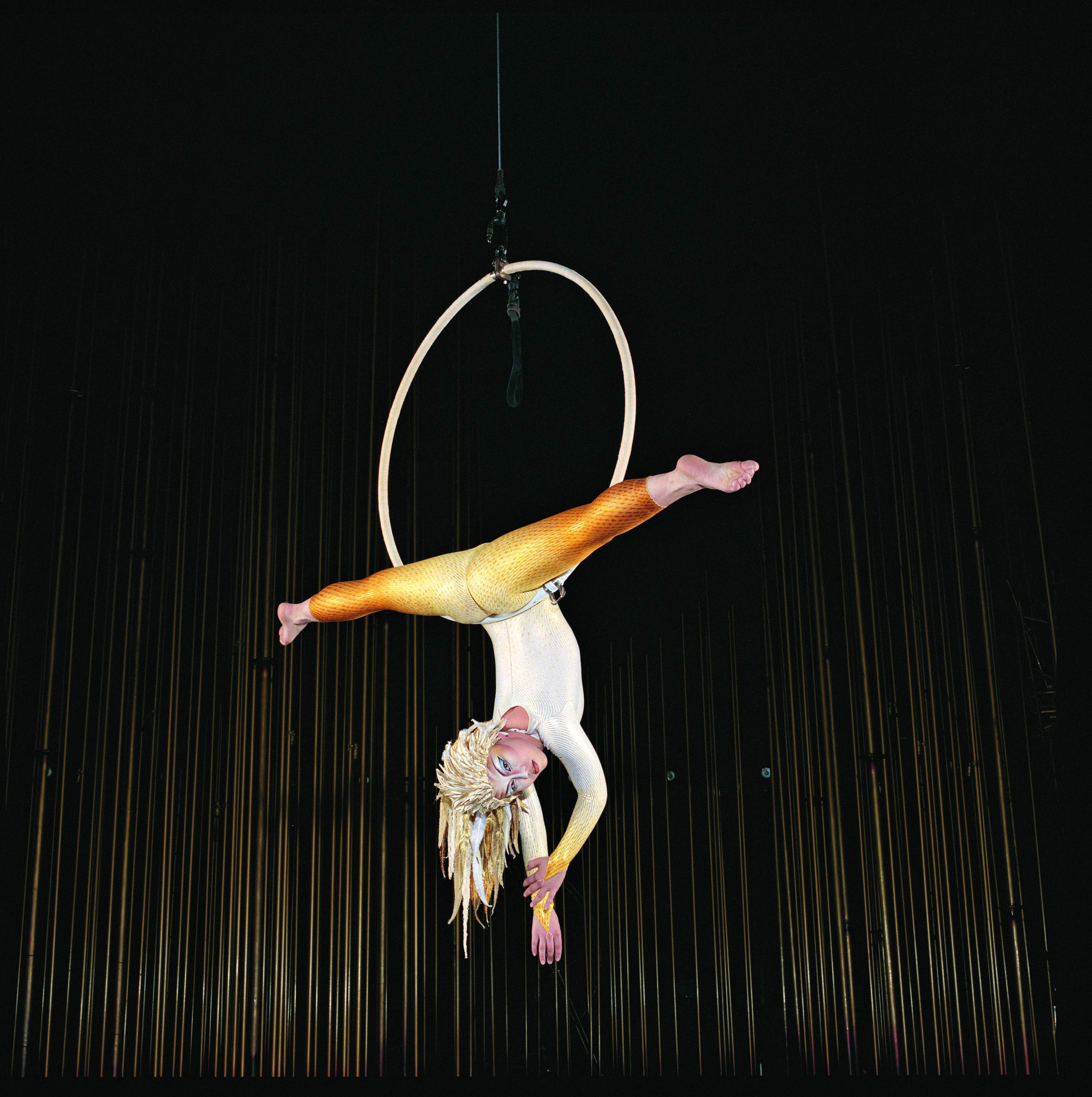Cirque du Soleil’s Varekai Takes San Diego by Storm
[cincopa A8MARW8WMmeB]
For those lucky enough to live in San Diego or who are traveling into the region between February 26th and March 1st, 2015, Cirque du Soleil’s traveling extravaganza, Varekai, is an absolute must. Now showing in a limited run at San Diego’s Valley View Casino Center, Varekai (pronounced ver·ay·’kie) is poised and ready to enthrall audiences with its signature and spectacular brand of magic, dance, drama and comedy that Cirque du Soleil has become famous for.
Yesterday evening, I had the opportunity to experience the show’s opening night. Having seen many Cirque du Soleil works over the years in lavish Las Vegas venues, including “O,” Mystère and Zarkana, my expectations were high if not a touch skeptical. I was uncertain how well the traveling format of a Cirque show would translate outside of a theater designed with precision around their notoriously detailed and demanding productions. But that skepticism soon abated shortly after the lights dimmed, the music commenced and the festival of performing art fabulosity swept me away into the fanciful world of Varekai.
The show begins as a young man, Icarus, falls from the sky. Innocent, vulnerable and wounded, Icarus lands in a magical forest populated by fantastical creatures. Throughout his journey he must overcome his fears to reach a state of healing and rebirth. And an epic journey it is.
The word “Varekai” comes from the Romany language of the gypsies and means, “wherever.” In this entertaining and compelling narrative, Varekai is an extraordinary world where anything is possible. The Varekai universe has four elements including the Forest, the Stage, the Catwalk and the Lookout, each with their own significance within the show’s contextualized set designed by Stéphane Roy. The Forest is home to Varekai’s inhabitants and consists of over 300 “trees” ranging from nearly 15 feet to over 34 feet tall. There are also somewhere around 20 “acrobatic” trees that characters can climb during the performance. The 42-foot diameter stage extends from the Forest and boasts five traps, two turntables and an elevating platform—all specially designed for the show’s acrobatic and aesthetic needs. Stretching nearly 100 feet, the Catwalk is a staircase used by the performers to travel from one end of the stage to the other and is a metaphor for the characters’ quest to touch the sky. Finally, the Lookout is a 23-square foot platform perched at the end of the Catwalk, which both represents a link to the outside world and functions as the set’s centerpiece.
Of course, Icarus does not wander through Varekai alone. He is joined by an exotic creature known as “The Betrothed,” a sensual beauty who helps Icarus but finds herself helped by him as well. Next is “The Guide,” a wise, kindly grandfatherly figure who helps inspire change. “The Skywatcher” rounds out the quartet of main characters. Birdlike, this mad scientist and inventor perches at the end of his nest, interpreting signs and warning of trials to come.
In my exclusive interview with the show’s publicist, Vanessa Napoli, about what makes Varekai distinctive, she remarked, “Varekai is so layered. It offers the audience so many facets. The story also offers a deeper meaning, if you are looking for it. Varekai is loosely inspired by the Greek mythology of Icarus but, in Varekai, the fallen angel descends into a magical and enchanted forest and begins his journey of rediscovery. The story talks about struggle and how sometimes we ‘fall down’ in life and struggle with our new destiny and begin the process of internal analysis or rebirth. It goes on to show you that everyone you cross in your path towards that new journey is there to teach you something and that they are all there for a reason; something I believe every human being can relate to, and this is the journey that Icarus goes through in Varekai. The creatures of the forest are persons he meets who show him how he doesn’t need his wings to fly or to pick himself up again.”
Of course, Cirque du Soleil is known for its jaw-dropping acrobatics and Varekai doesn’t disappoint. Napoli explains, “Acrobatically the show is quite diverse from any other Cirque show. The acrobatics are extremely high level but there are some very unique components such as Single Point Trapeze, Solo on Crutches, hand balancing with an incredible flexibility in the hips and torso versus the back, and Swing to Swing.” Additional acts include the aerial hoop, aerial straps, clown acts, Georgian dance, juggling, Russian swings and a slippery surface, upon which it appears as though the performers are skating. Two acts in particular stand out from what are already amazing feats. The Flight of Icarus features dives and contortions performed from a net reminiscent of silks while the Icarian Games bring to life, “an ancient discipline of the circus arts rarely seen in today’s contemporary circus culture,” known as human juggling.
These incredible performances come to life with music by Violaine Corradi. Performed by a live seven-piece band, the score features world music combining elements of Hawaiian ritual, songs of 11th-century troubadours from the south of France, gospel music and traditional Armenian melodies with contemporary arrangements.
Along with the sets and music, costumes play a pivotal role in Varekai. Napoli explains, “The show is elegant and the costumes are incredible. They were designed by Academy Award Winner Eiko Ishioka who designed costumes for Bram Stoker’s Dracula as well as the more recent Mirror Mirror. They will definitely please visually, along with the gorgeous set design and mood lighting that really make you feel as though you are in a forest.”
The costumes for the show are, in fact, a mammoth undertaking comprising over 600 costumes, wigs, shoes, hats and various accessories that took over 33,000 hours to construct. It takes an additional 250 hours per week to keep the costumes looking show-ready. Incidentally, applying the performers’ makeup can take anywhere from 45 to 90 minutes, and each artist does their own.
A force of over a dozen highly imaginative individuals have brought Varekai to life, making it a memorable part of Cirque du Soleil history. Launching in 1984 with a group of just 20 performers, now more than 30 years later Cirque du Soleil comprises over 5,000 employees with 1,300 artists from over 50 different countries. The dedication and passion each member has for the show now shines through in the incredible San Diego-based performance of Varekai. Don’t miss your fleeting opportunity to be captivated by this wondrous world and the creatures within.
***Some or all of the accommodations(s), experience(s), item(s) and/or service(s) detailed above may have been provided at no cost and/or arranged to accommodate this review, but all opinions expressed are entirely those of Merilee Kern and have not been influenced in any way as per the disclosure policy on our “Legal” page***


















